Junk rocker: artist Holly Hendry’s new solo show conveys her taste for waste
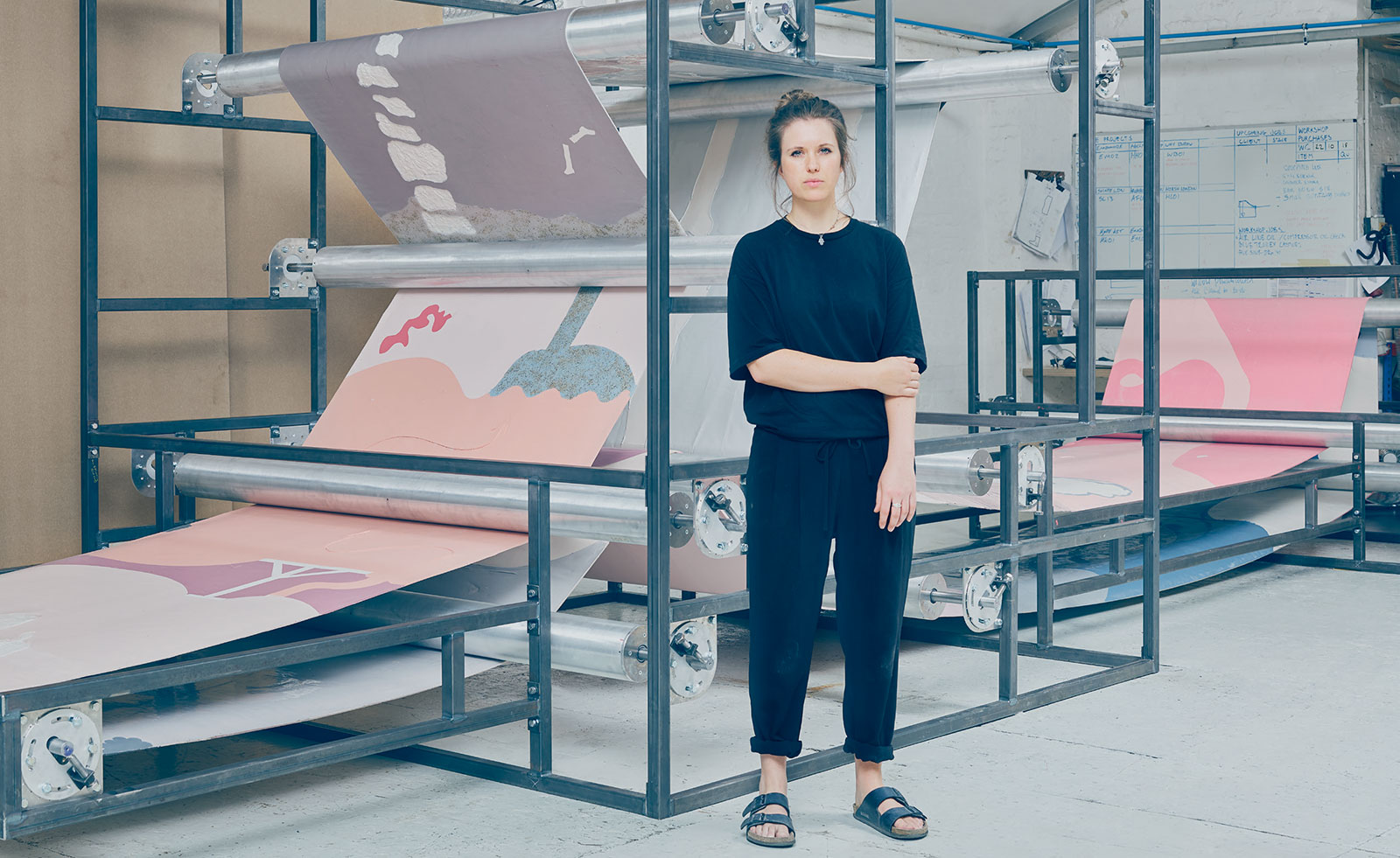
Holly Hendry at the jail make fabrication studio in south London with part of her new piece, The Dump is Full of Images, which involves an artificial skin, embedded with debris, being conveyed around a steel framework, while being pulled, stretched and squeezed to reveal images and objects.
In 2013, a 140m-long digger named Phyllis completed her 4.2-mile tunnel dig for London’s Crossrail. At the finish line, job done, she had to dig her own grave. Deemed too heavy to be extricated, she was cast aside, gutted of valuable parts and bricked over. Phyllis’ plight struck a chord with British artist Holly Hendry – so much so that, last year, she installed a work in London’s Selfridges in memory of the digger. The multilayered sculpture was embedded with ‘things that don’t disappear’, such as chewed gum and fake nails – tokens of disposability and consumption staged within a temple to consumerism.
Since graduating from the RCA in 2016, Hendry has enjoyed a sharp ascent, with major solo shows in Berlin, Rome and, most notably, at the Baltic Centre for Contemporary Art, Gateshead, making an impact with large, site-specific installations on themes of decay, the body and material reuse.
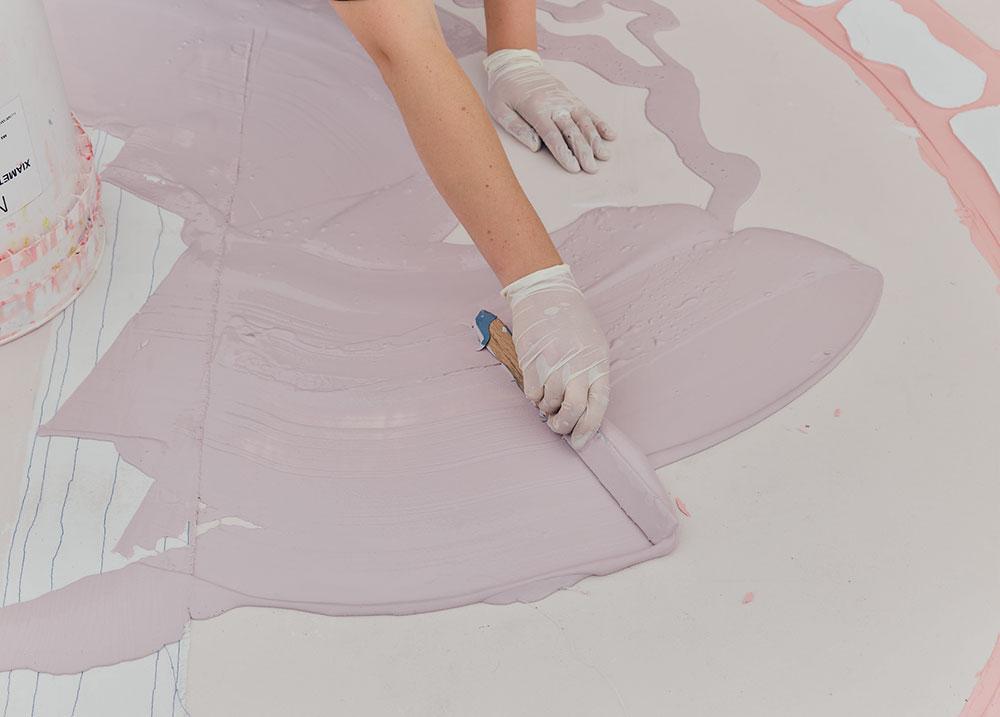
Hendry layers the skin-like belt using a combination of materials, including silicone, which are then joined to form a continuous strip.
Hendry is not afraid of going big and thinking deep. Homeostasis, created as part of a residency at Sharjah Art Foundation in 2014, involved a galvanised steel pipe snaking around a courtyard, funnelling a continuous flow of air, inspired by the Barjeels (wind towers) of the Middle East. Cenotaph, a series of sculptural ‘pipe sections’ for the 2018 Liverpool Biennial, delved into the history of the city’s hollow underground architecture, including the enigmatic Williamson tunnels and the old dock entombed under the Liverpool One shopping centre. ‘I was thinking about the mucky sides of the city, what we brush under the surface,’ she recalls.
Hendry’s taste for waste and ability to get deep under the skin of her subjects has led her down another path, to a major solo show at Yorkshire Sculpture Park, The Dump is Full of Images, opening later this month. Inside her Woolwich studio, located in a wasteland of derelict factories, Hendry’s YSP commission is still under construction, but gaining traction. ‘It feels ridiculous that an idea in your head becomes this big conversation; it’s terrifying and exhilarating,’ she says, her eyes darting around her space scattered with ambiguous silicone body parts – a taste of what’s to come.
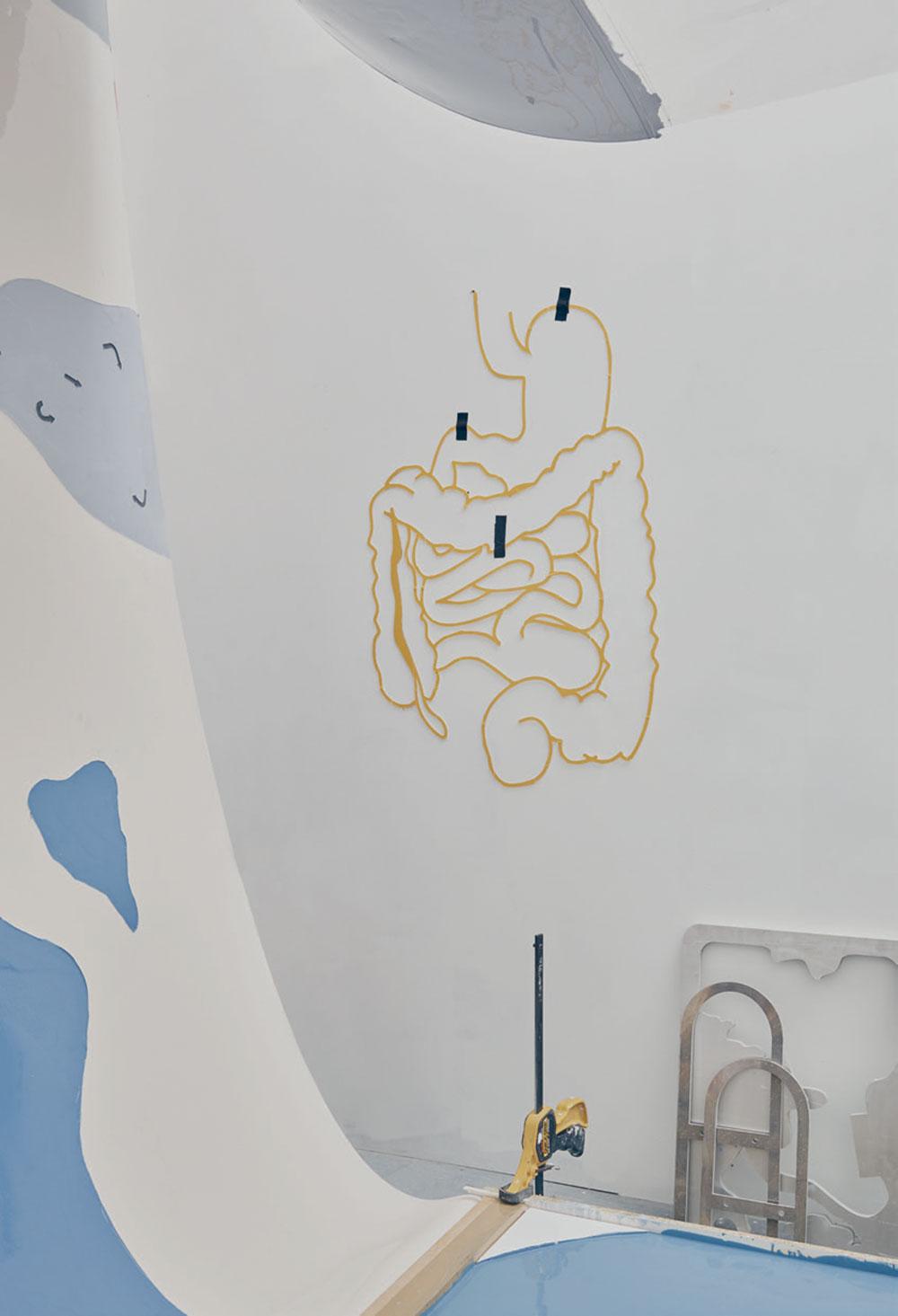
A plastic anatomical inlay that will be used to create images in the belt.
YSP is an apt stage for Hendry’s proposed diorama, which responds to Feilden Fowles’ design of The Weston, the park’s much-praised new visitor centre, with its undulating roof windows and semi-submergence in a landscape of sculptural stardom. ‘I’m doing a sculpture made of reused plastics and crap next to a Henry Moore that lasts for eternity in bronze.’
In its entirety, the piece is an 8m-long ‘monstrous’ human body lying supine. But what might appear to be a set menu of moving parts is an all-you-can-eat buffet of sickly sweet metaphors. The title is drawn from the epilogue of The Real Thing, a study of technology and culture by the American scholar Miles Orvell. ‘He talks about junk as a system of disorder, but also as a way to look at something in a different light,’ she says. ‘I’m trying to do the same with materials’.
Within the installation’s Perspex and steel framework, things get more complex. A reeling conveyor belt of silicone ‘skin’ is yanked, warped and continually ‘regurgitated’ on steel rollers, resembling an autopsy, a Heath Robinson-esque printing press, or a digestive system, depending on your angle or disposition. It’s an impressive contraption for an artist who has never used motors before. ‘I’m not sure how I feel about kinetic sculpture,’ Hendry admits. ‘It’s a big risk, but important in that suggestion of life.’

Studies and sources of inspiration for The Dump is Full of Images on the wall of Henry's studio, including The Unswept Floor, a now-lost mosaic by Sosus of Pergamon; The Incredulity of Saint Thomas by Caravaggio; and Wunder in Uns (1923), Plate III, redrawn from illustrations
The belt itself is mural-like, barnacled with whatever debris is to hand: studio leftovers, bits of pen and wrappers embedded in block-coloured anatomical shapes like human teeth and a bowel. In developing the artificial skin, Hendry picked the brain of Professor Parik Goswami of the Institute of Skin Integrity and Infection Prevention at the University of Huddersfield. His research group’s innovative materials involve a cocktail of thermoplastics, which can be used as synthetic membranes for various medical applications. ‘It’s about the skin as a barrier, boundary and edge,’ says Hendry.
The artist’s influences are extensive and tricky to boil down. She has a thing for holy relics and their legitimacy (or lack thereof). ‘There are like five Jesus’ foreskins,’ she says. ‘It’s not about authenticity, it’s about what it stands for.’ Her installation’s Perspex ‘containers’ exalt the skin belt like an artefact in a museum vitrine. ‘It’s the grisly idea of dying and going into the ground, then coming from the ground and being made into objects,’ says Hendry, whose conversation can turn from laughter to death, Vitruvius to digestion in a nanosecond.
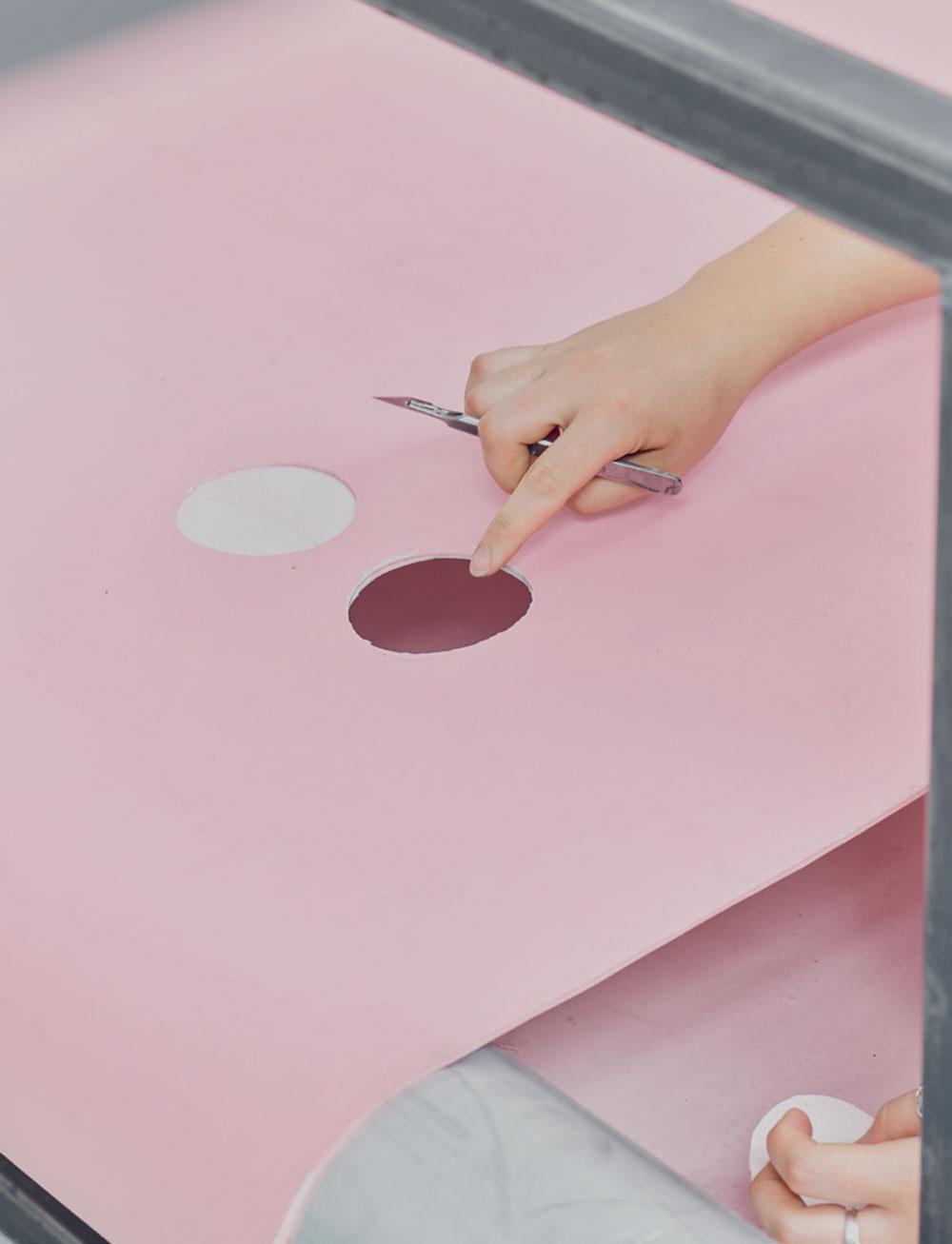
Cutting out shapes in the skin-like belt.
Theory is important, like Maggie Kilgour’s treatise on ‘incorporation’ in From Communion To Cannibalism, or Rem Koolhaas’ dissection of urbanism in Junkspace. There’s a hint of Louise Bourgeois, mixed with Rebecca Horn’s sculptural precision and flecks of Philip Guston’s cartoonish vulgarity, if his characters were prised from the canvas and mashed into a pulp. The most direct link is Franz West, but a little cleaner, calmer and more lucid. ‘Artists like [West] give you permission to go to places you thought were too dumb,’ she says.
Whether it’s Phyllis the digging machine, the abstruse tunnels beneath the city of Liverpool, or a rotating belt of plastic remains, Hendry has a knack for animating inanimate objects as relics of lives lived. You’ll leave her YSP installation with much food for thought, the sour tang of consumerism and an uneasy awareness of ‘being a body with a skin’. All this from a mild-mannered artist who doesn’t look capable of peeling the skin off a rice pudding.
As originally featured in the October 2019 issue of Wallpaper* (W*247)
Wallpaper* Newsletter
Receive our daily digest of inspiration, escapism and design stories from around the world direct to your inbox.
INFORMATION
The Dump is Full of Images, 21 September – 19 April, Yorkshire Sculpture Park. ysp.org.uk; hollyhendry.com
Harriet Lloyd-Smith was the Arts Editor of Wallpaper*, responsible for the art pages across digital and print, including profiles, exhibition reviews, and contemporary art collaborations. She started at Wallpaper* in 2017 and has written for leading contemporary art publications, auction houses and arts charities, and lectured on review writing and art journalism. When she’s not writing about art, she’s making her own.
-
 Bang & Olufsen update their iconic portable Bluetooth speaker, the Beosound A1
Bang & Olufsen update their iconic portable Bluetooth speaker, the Beosound A1The third generation of the Bang & Olufsen Beosound A1 features better sound and durability, all wrapped up in a finely crafted aluminium shell
-
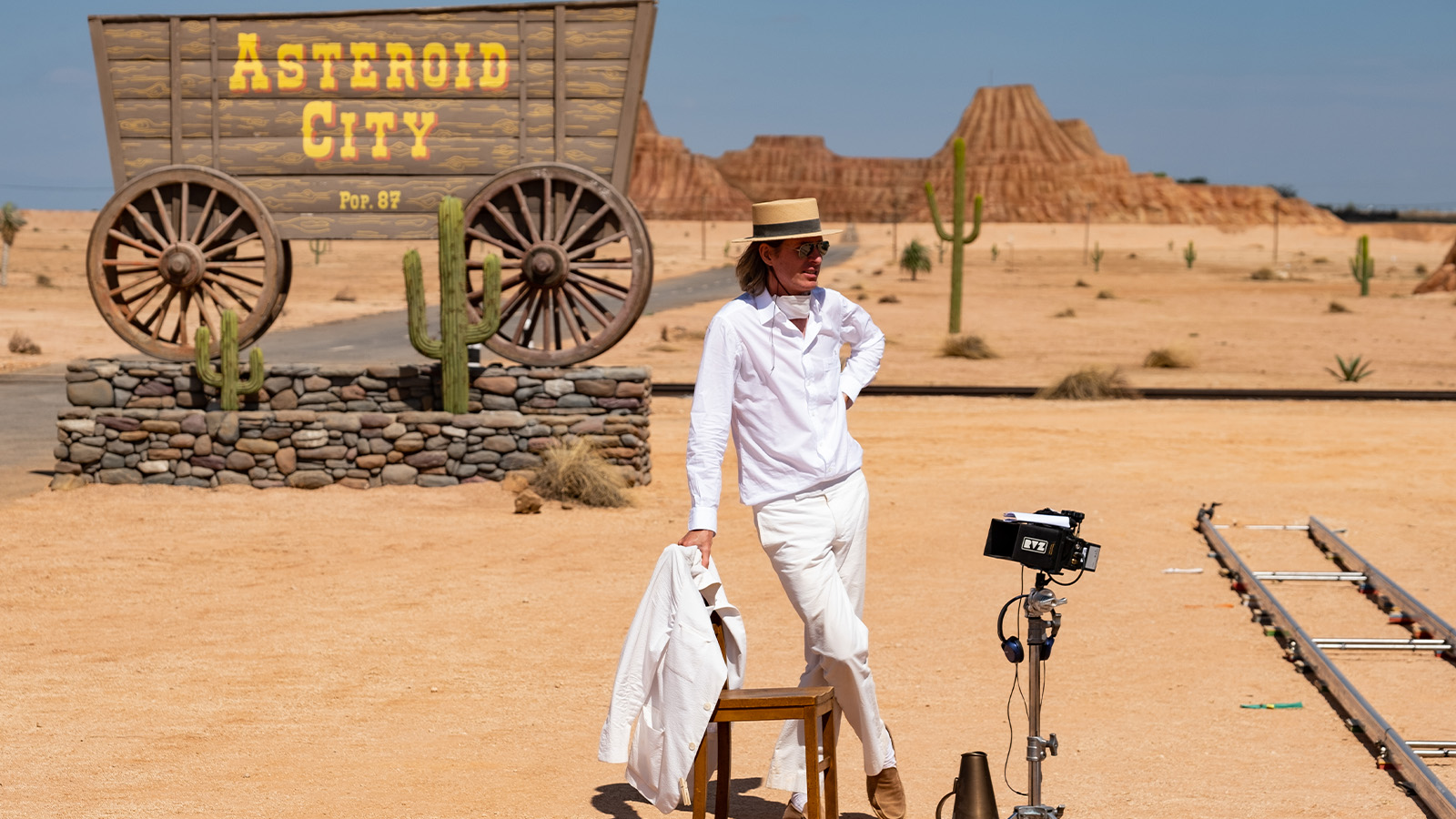 A major Wes Anderson retrospective is coming to London
A major Wes Anderson retrospective is coming to LondonComing to London’s Design Museum in November 2025, ‘Wes Anderson: The Archives’ explores the director's filmography from the 1990s to his recent Oscar-winning picture, accompanied by hundreds of props, models and costumes
-
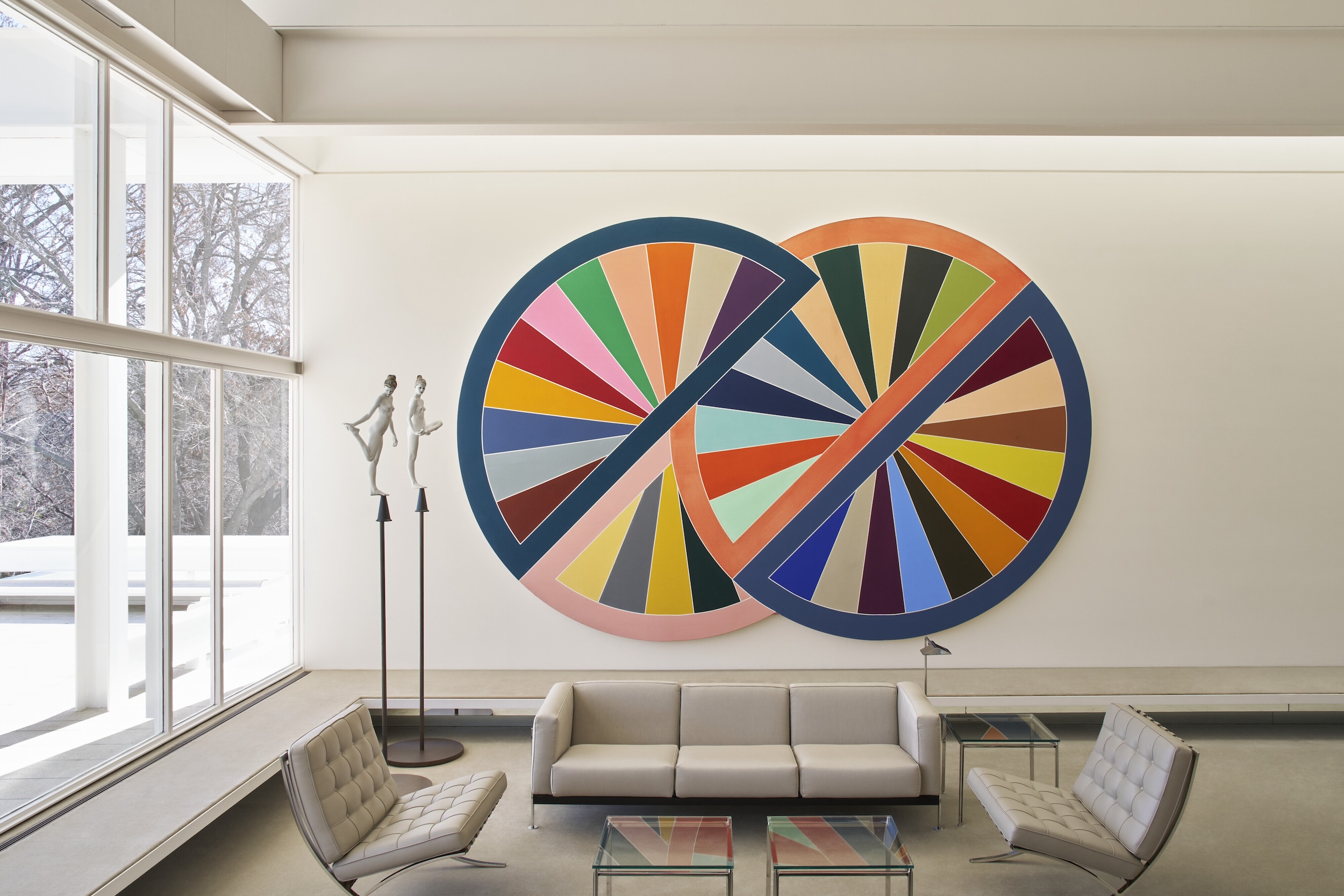 Modern masterworks from a Paul Rudolph jewel are hitting the auction block next week
Modern masterworks from a Paul Rudolph jewel are hitting the auction block next week'Art from the Bass House' at Christie’s this month is the perfect marriage of art and architecture
-
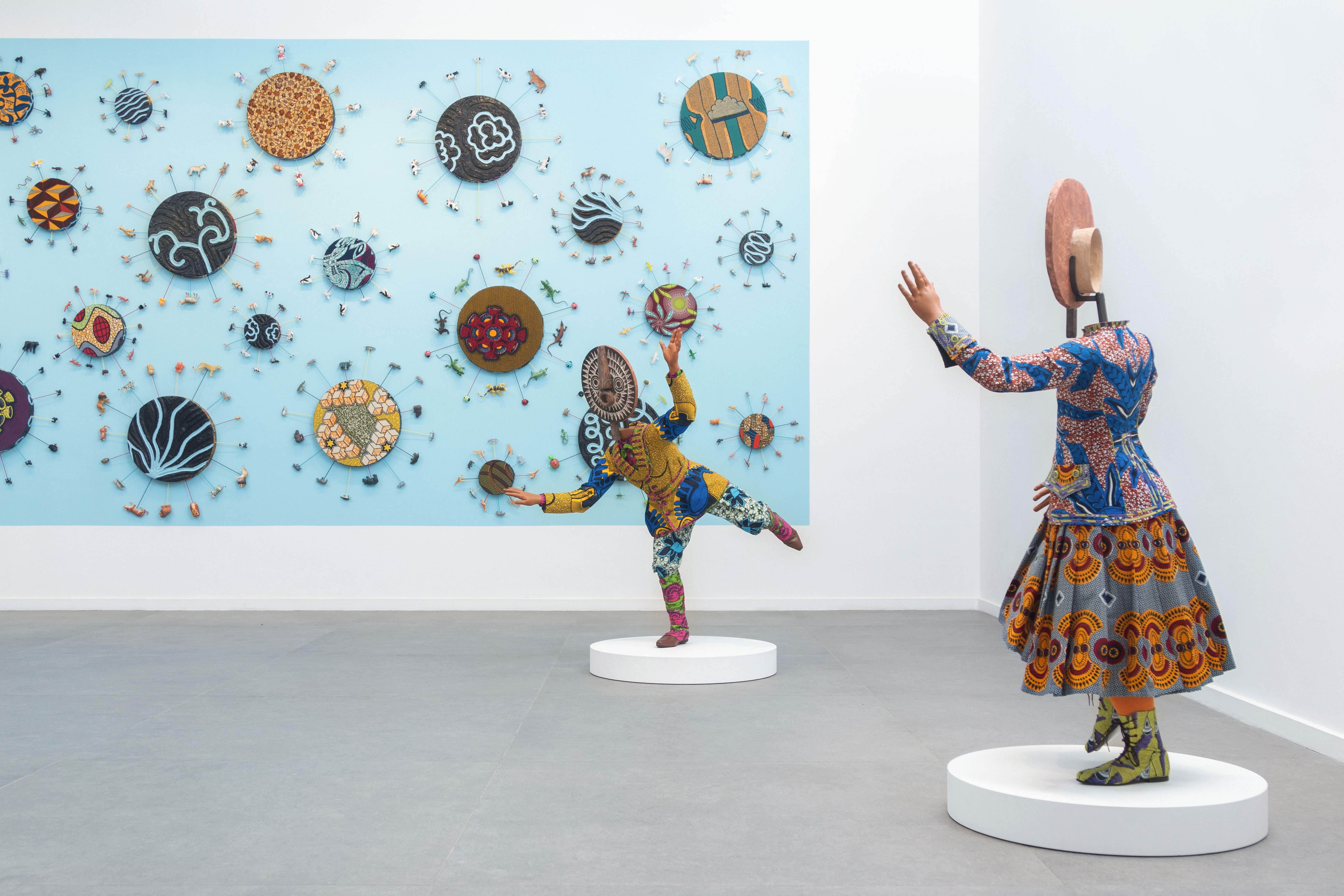 Inside Yinka Shonibare's first major show in Africa
Inside Yinka Shonibare's first major show in AfricaBritish-Nigerian artist Yinka Shonibare is showing 15 years of work, from quilts to sculptures, at Fondation H in Madagascar
-
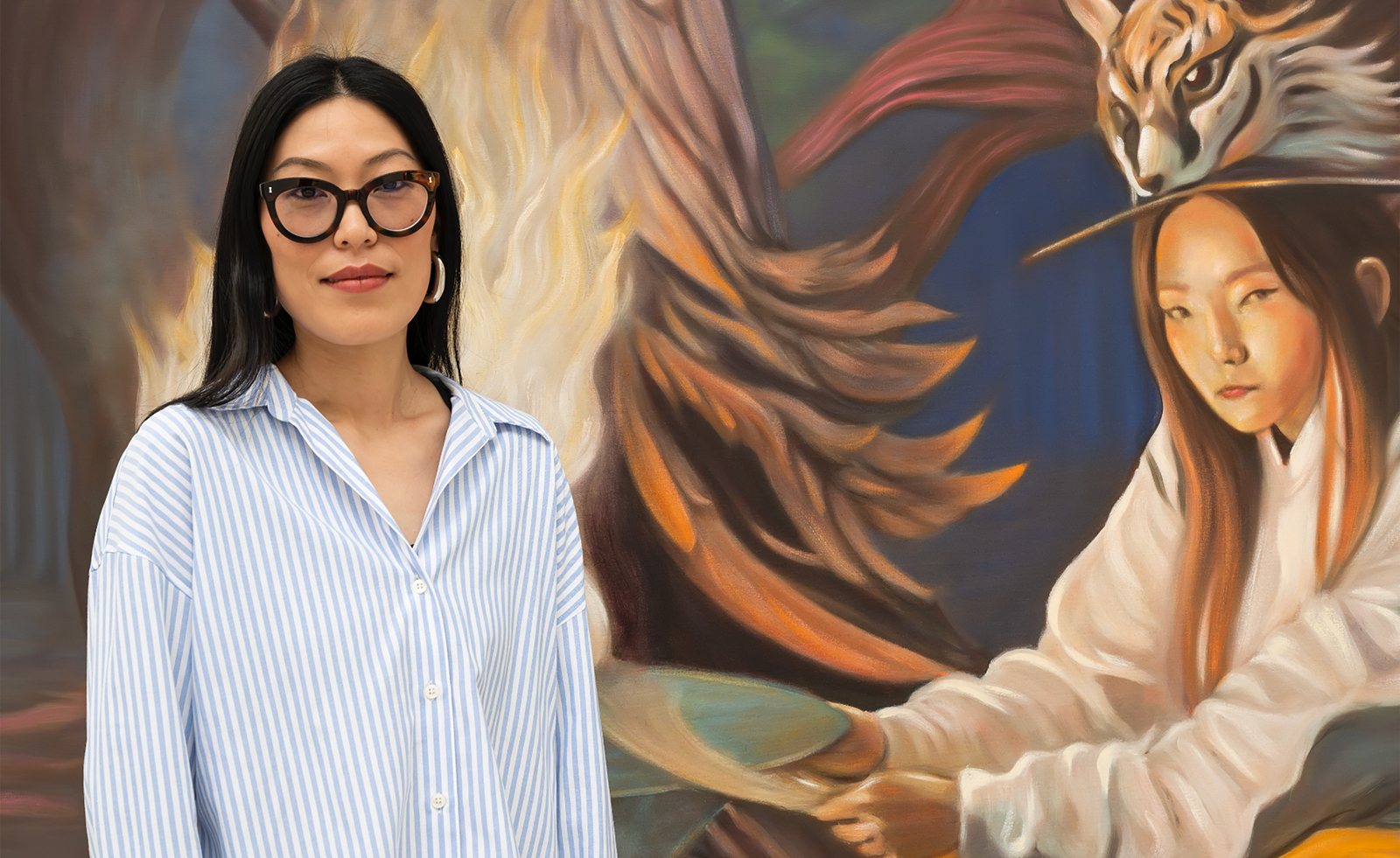 Meet the Turner Prize 2025 shortlisted artists
Meet the Turner Prize 2025 shortlisted artistsNnena Kalu, Rene Matić, Mohammed Sami and Zadie Xa are in the running for the Turner Prize 2025 – here they are with their work
-
 The art of the textile label: how British mill-made cloth sold itself to Indian buyers
The art of the textile label: how British mill-made cloth sold itself to Indian buyersAn exhibition of Indo-British textile labels at the Museum of Art & Photography (MAP) in Bengaluru is a journey through colonial desire and the design of mass persuasion
-
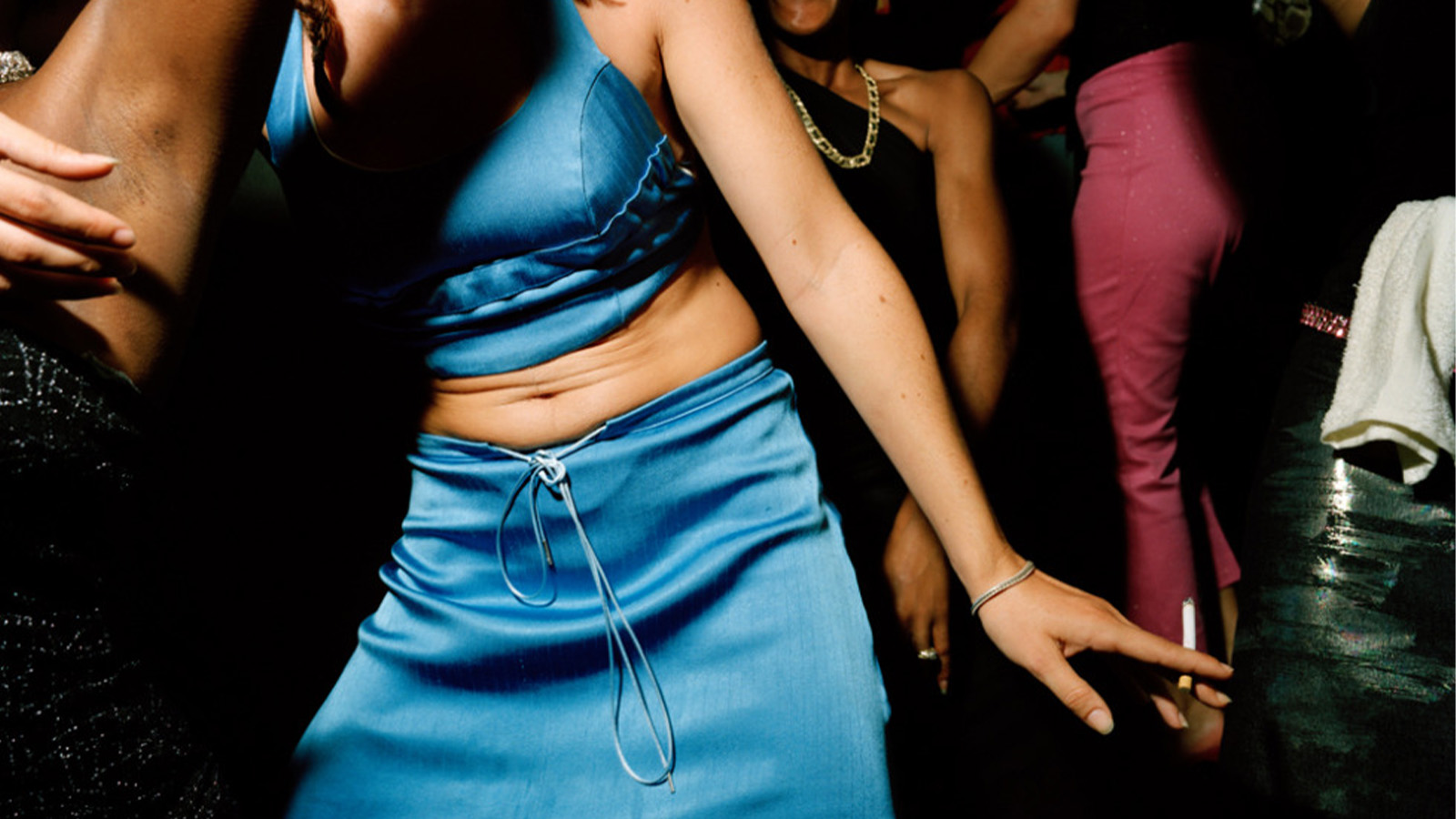 From counter-culture to Northern Soul, these photos chart an intimate history of working-class Britain
From counter-culture to Northern Soul, these photos chart an intimate history of working-class Britain‘After the End of History: British Working Class Photography 1989 – 2024’ is at Edinburgh gallery Stills
-
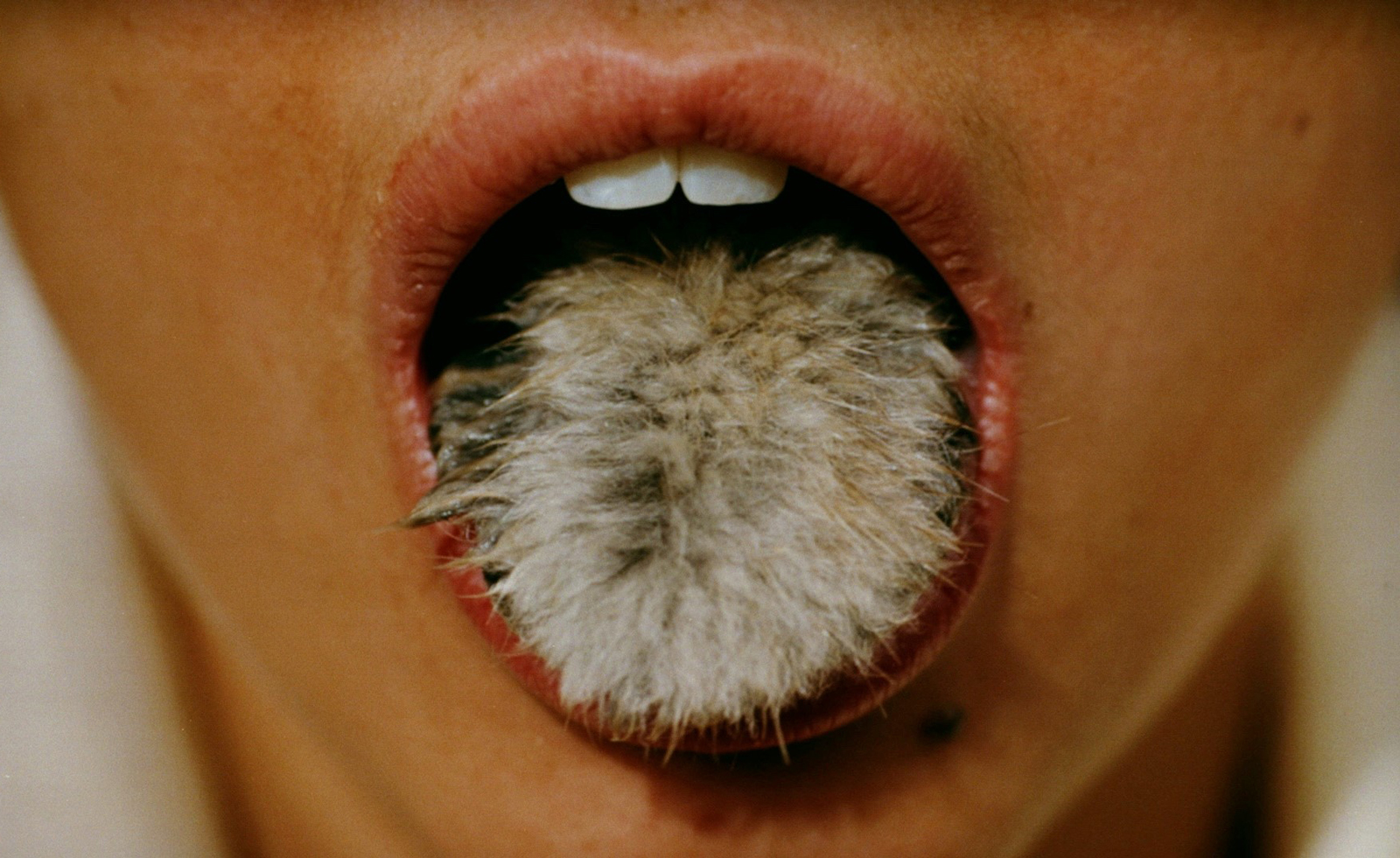 Surrealism as feminist resistance: artists against fascism in Leeds
Surrealism as feminist resistance: artists against fascism in Leeds‘The Traumatic Surreal’ at the Henry Moore Institute, unpacks the generational trauma left by Nazism for postwar women
-
 From activism and capitalism to club culture and subculture, a new exhibition offers a snapshot of 1980s Britain
From activism and capitalism to club culture and subculture, a new exhibition offers a snapshot of 1980s BritainThe turbulence of a colourful decade, as seen through the lens of a diverse community of photographers, collectives and publications, is on show at Tate Britain until May 2025
-
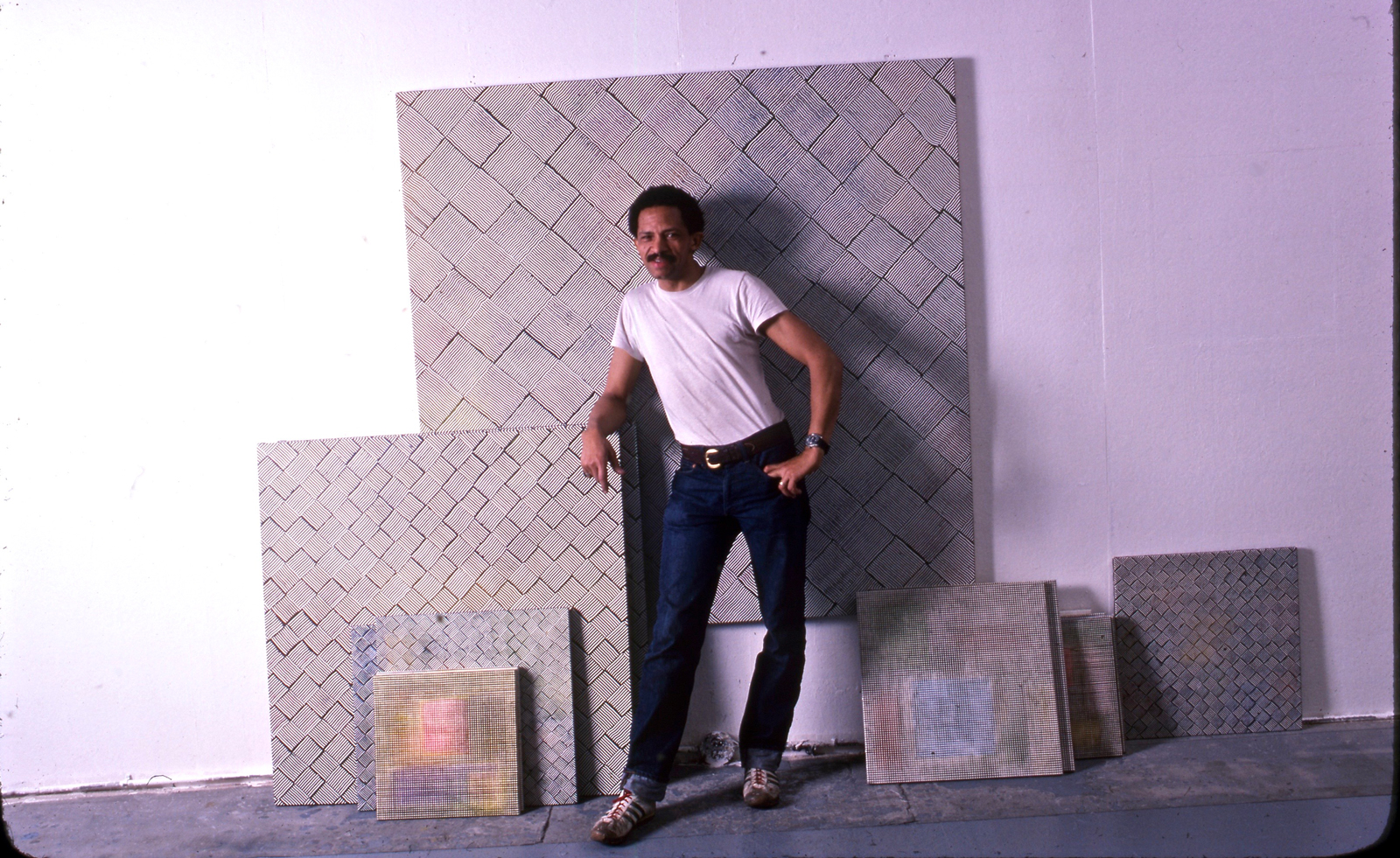 Inside Jack Whitten’s contribution to American contemporary art
Inside Jack Whitten’s contribution to American contemporary artAs Jack Whitten exhibition ‘Speedchaser’ opens at Hauser & Wirth, London, and before a major retrospective at MoMA opens next year, we explore the American artist's impact
-
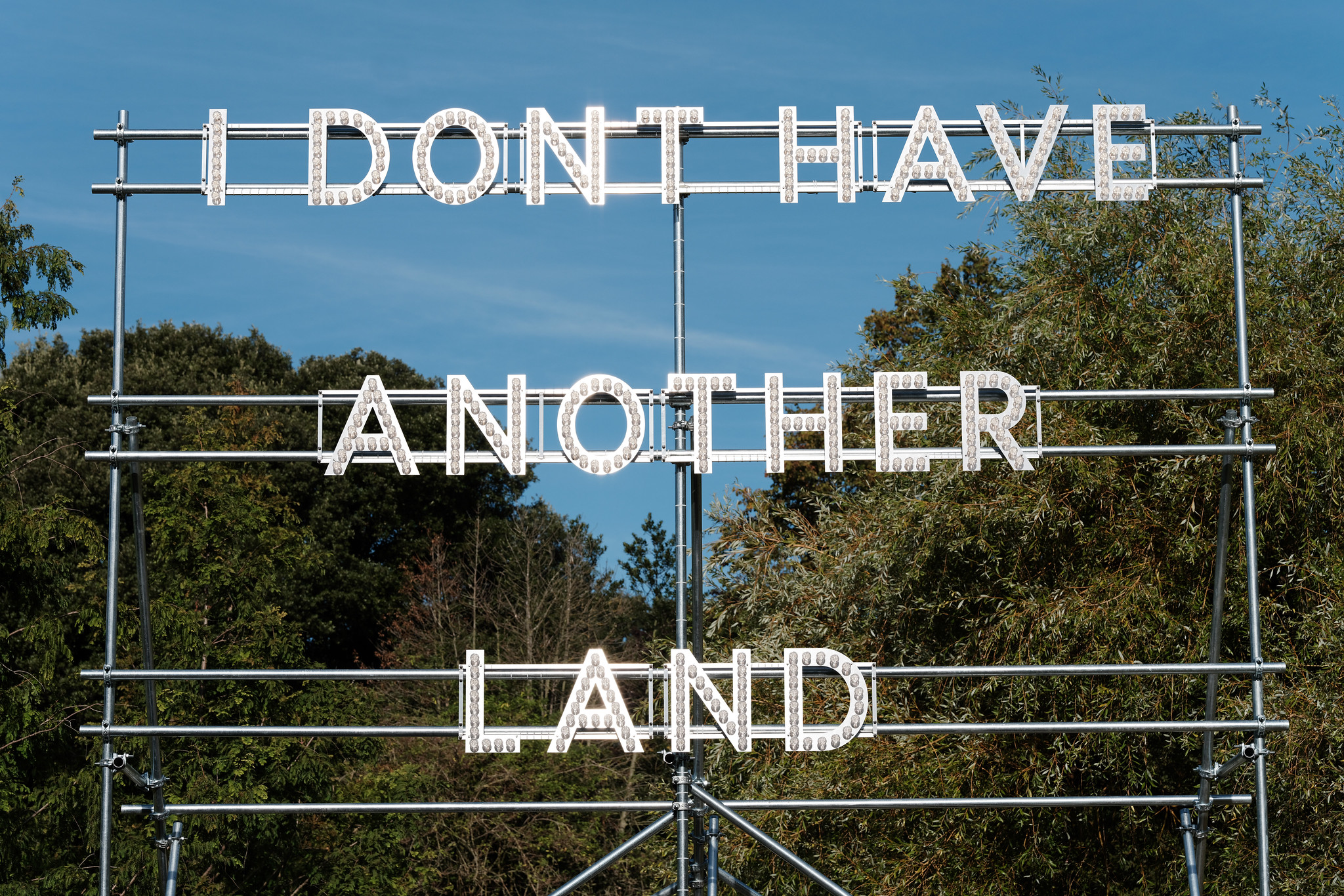 Frieze Sculpture takes over Regent’s Park
Frieze Sculpture takes over Regent’s ParkTwenty-two international artists turn the English gardens into a dream-like landscape and remind us of our inextricable connection to the natural world